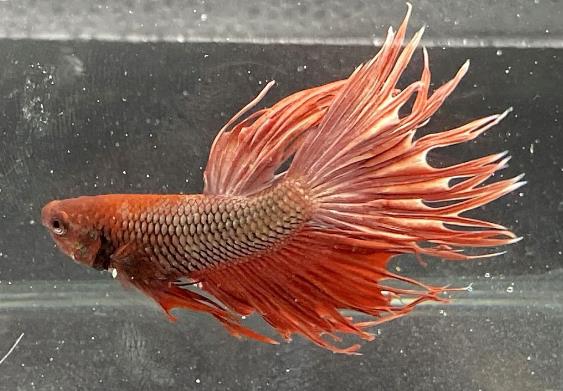Below is a detailed guide to betta fish breeding, compiled from various farming practices and breeding cases:

I. Pre-Breeding Preparation
Selecting Breeding Fish
Males should be robust in build and actively blowing bubbles (a sign of readiness to mate). Females need to have swollen bellies and protruding cloacal openings (indications of carrying eggs).
It is recommended to house the breeding fish separately 1–2 weeks in advance to promote nutrient accumulation and sexual maturity.
Environment Setup
The breeding tank is ideally 20×15×15 cm, with the water level maintained at around 15 cm.
Essential items include: Indian almond leaves/foam blocks (for bubble nest construction) and aquatic plants/pebbles (for the female to hide in).
The water temperature must be stabilized at 26–28°C; if it drops below 25°C, use a heater to gradually raise the temperature.
II. Pairing and Breeding Process
Initial Isolation and Observation
Temporarily place the female in a transparent isolation box or mineral water bottle within the breeding tank, allowing her and the male to see each other without physical contact for 3–5 days.
During this period, feed high-protein foods (such as brine shrimp) to promote follicle development.
Formal Tank Introduction
Release the female into the tank once the male has built a bubble nest with a diameter of 3 cm or more.
Signs of successful pairing include: the male "dancing" around the female, and the female actively touching the bubble nest.
During mating, the male will squeeze the female’s abdomen to induce egg-laying. After fertilization, the male will carry the eggs back to the bubble nest.
III. Post-Breeding Management
Handling Parent Fish
Immediately remove the female to prevent her from eating the eggs. Leave the male in the tank to guard the eggs until the fry can swim freely (approximately 3 days).
The male should not be fed while guarding the eggs to avoid water contamination from waste.
Fry Care
48 hours after hatching, feed ultra-fine brine shrimp larvae 3–4 times a day.
Keep the water temperature constant at 26°C; after two weeks, the fry can be gradually transferred to a larger tank.
Key Notes
Turn off the filtration system during breeding to prevent water flow from destroying the bubble nest.
If mating does not occur within 72 hours, re-pair the fish or replace the breeding stock.
For autumn breeding, pay special attention to day-night temperature differences and use a thermostat if necessary.
Following these steps, approximately 80% of healthy breeding pairs will successfully reproduce. Most failed attempts are caused by water temperature fluctuations or females not carrying eggs. It is advisable to select mature females whose eggs are visible through their translucent bellies.
